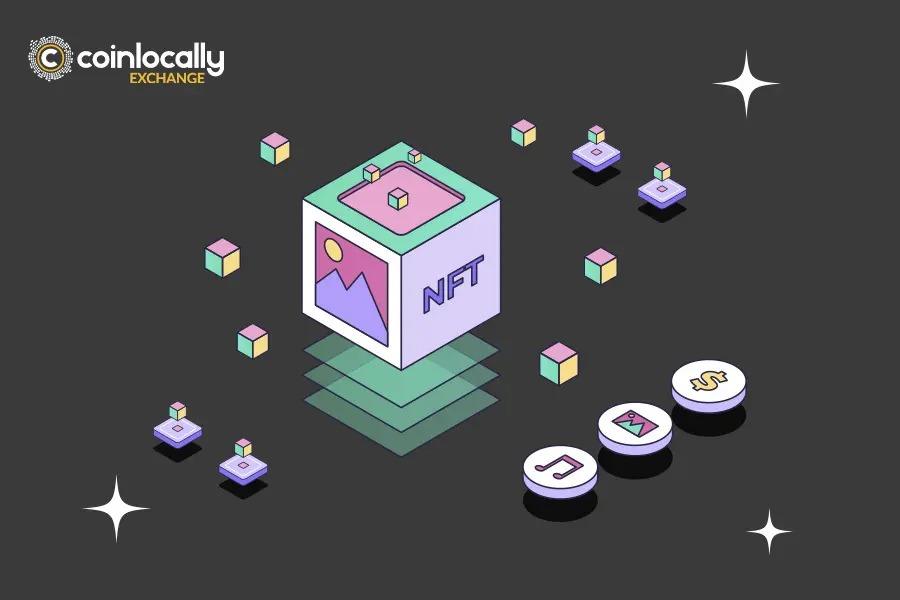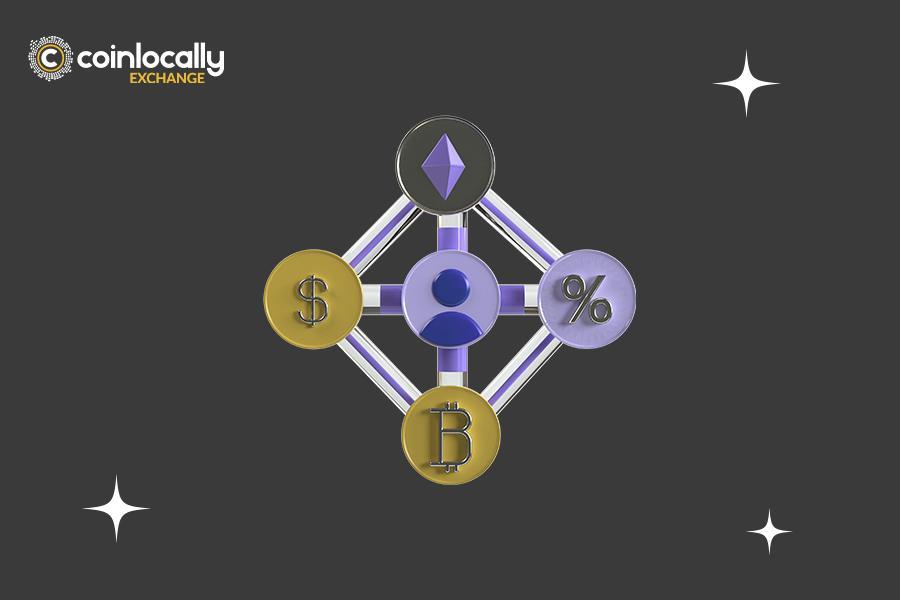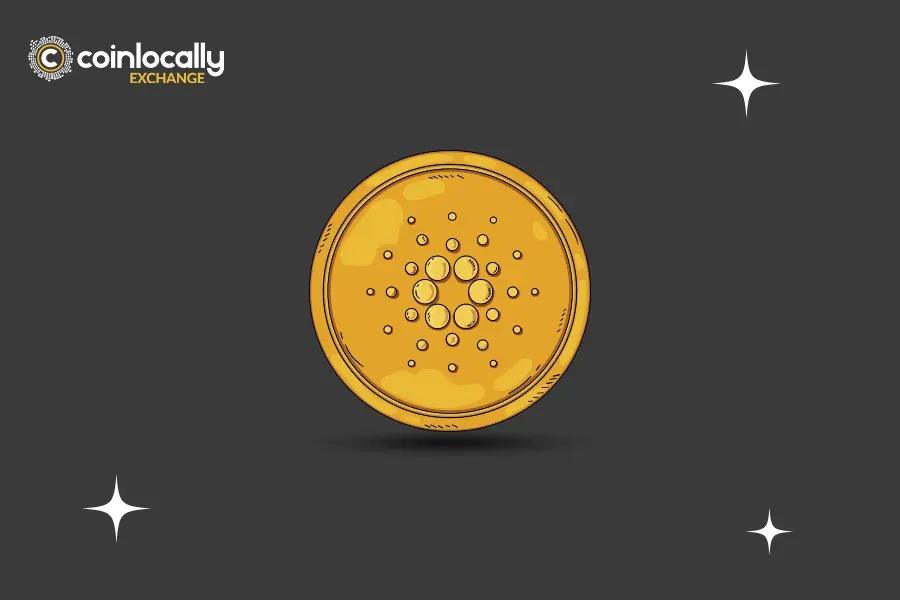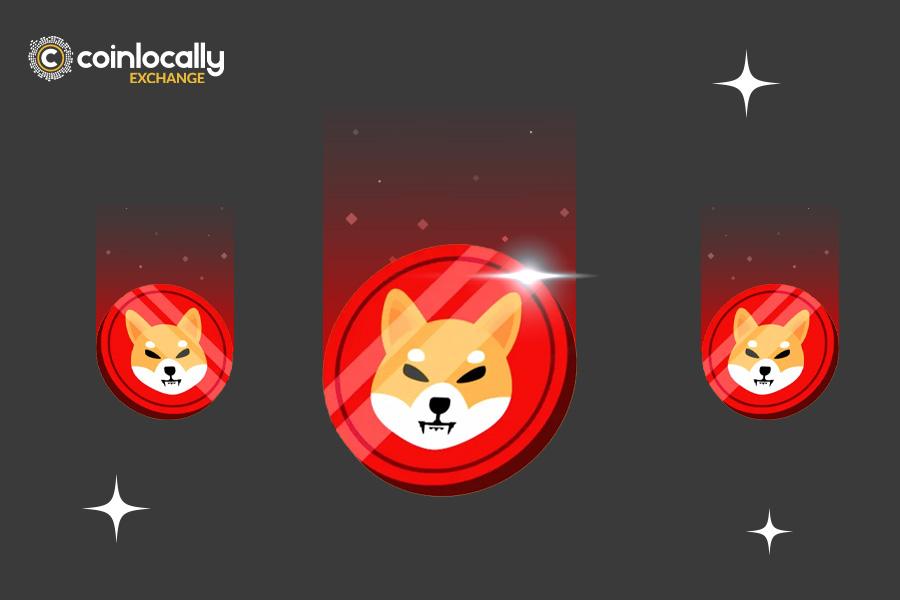During the initial NFT craze, everyone rushed toward this new technology that was making its early investors millionaires. No hype lasts long, and many ended up with NFTs lying idle in their wallets. The bear market worsened, and many were left with illiquid NFTs. One way to reverse this situation is NFT staking. So, let’s learn to create a new income stream by staking your idle NFTs in the best NFT staking platforms.
Table of Contents
What Is Staking?
Blockchains with Proof-of-Stake (PoS) consensus mechanisms are known for consuming much less energy than traditional Proof-of-Work (PoW) models. PoS also offers faster transactions, more scalability, and more security.
PoS blockchains require participants to stake their assets, which involves locking up crypto assets in a blockchain platform for a specific period to help with the blockchain’s operations. In return, stakers receive crypto assets as rewards for their contribution to the platform.
Since the day staking was introduced, many have considered it a new, decentralized, and independent way to earn passive income.
Many staking platforms offer a high Annual Percentage Yield (APY) that the traditional finance system doesn’t achieve.
Crypto assets can be staked on different staking platforms, regardless of the blockchain they’re on. In fact, you can even stake Bitcoin and NFTs!
We first need to refresh our memory about NFTs to learn how NFT staking works.
What Is NFT?
In short, an NFT (or Non-Fungible Token) is a cryptographic asset based on a blockchain. NFTs come in various forms, such as pictures, music, tweets, videos, etc.
As a matter of fact, everything can become an NFT on the blockchain.
NFTs are similar to collectibles and follow the same logic. An NFT’s value is determined by its rarity, edition, and characteristics.
Many NFTs also offer real-world utility. For example, an artist can mint an NFT collection and announce that every collector of one of those NFTs can attend the artist’s private gallery.
Undoubtedly, NFTs have provided a new investment opportunity, and many have made millions from just investing in a single NFT.
Not only can you benefit from investing in NFTs, but you can also earn passive income through NFT staking.
What Is NFT Staking?
NFT staking means an NFT owner stakes their NFT on either the NFT’s native platform or a third-party platform. This means NFT owners lock up their NFTs on the platform for a set period to earn staking rewards as a form of passive income.
The lockdown periods vary from platform to platform. Some platforms offer NFT staking for a strict time limit, while others have an indefinite staking lockup period.
You may wonder why you should trust another platform to keep your NFT and lock it up for quite some time. Let’s see why!
What Is the Purpose of NFT Staking?
There are several reasons to consider staking your NFTs, especially if you plan to hold them in the long run and don’t plan to sell them anytime soon.
NFT staking can provide a passive income stream, offer platform governance rights, and grant membership privileges. Let’s examine each of these.
Passive Income
The primary purpose of NFT staking is to generate passive income. When you stake your NFT, the staking platform will calculate the value of your NFT and your estimated income and APY based on the NFTs’ rarity, value, and type.
Once you sign the NFT staking contract, your NNFTs are locked in the platform, and you start earning rewards weekly, monthly, or yearly, depending on the NFT staking platform.
Platform Governance
Some platforms allow users to stake their NFTs and, in return, earn a share of the platform’s governance.
Staking NFTs can be the gateway to entering the Decentralised Autonomous Organization (DAO) that runs the NFT staking platform.
Thanks to joining the DAO, users are granted voting rights, meaning they can vote on proposals and make changes to the platform.
Membership Privileges
Other than earning tokens, some NFT staking platforms offer real-world utilities in exchange for the staked NFT. A well-known example is Binance, which provides a utility token tied to sports teams.
This utility token is earned once you stake an NFT on Binance. It can trade with priority ticket sales and participate in team decisions.
To understand how NFT staking can provide these benefits, we must learn more about its mechanics and how it works.
How Does NFT Staking Work?
Blockchain projects have been leaning toward the Proof-of-Stake (PoS) consensus mechanism because of its sustainability and efficiency.
PoS has network participants lock up (stake) their tokens and weigh their rewards according to the number of their locked-up tokens. The more you stake, the more you earn.
This exact staking process is also possible with NFTs, as investors can lock up their NFTs in a staking platform for a determined period to earn interest.
Just like every financial opportunity, NFT staking has risks and benefits, which we must be aware of in advance.
The Risks of Staking NFTs
No investment decision is risk-free, and investing in NFTs is no exception. Two of the most common risks in NFT staking are rug pulls and price volatility.
Rug Pulls
Although your NFT is staked on the platform, the risks of rug pulls and hacks aren’t always zero. Rug pulls generally happen when the developers decide to leave the project, often resulting in users holding useless tokens and/ or NFTs.
Price Volatility
The crypto market is infamous for its volatility, and during your NFT’s lockup period, your NFT might see a significant value rise or drop. Consider this, especially while staking on platforms with longer lock-in. You won’t be able to sell your NFT for some time. Still, if you plan on making long-term investments by staking your NFT, you don’t need to worry too much about temporary price changes.
Although no investment is risk-free, it isn’t benefit-free either! Let’s look at the positive side and learn more about the benefits of staking.
The Benefits of Staking NFTs
What is the point of staking NFTs if they have no benefits? Considering the benefits, NFT staking can make a profitable investment. Let’s go through staking benefits.
Earning Passive Income
Many crypto users hold a cryptocurrency for a long time to take advantage of the gradual price increase. Since they don’t intend to sell their assets anytime soon, they stake the assets to earn additional passive income from their investment.
Governance Rights
Staking platforms often reward stakers with their native tokens. These tokens not only hold value but also give stakers access to additional features of the platform, like governance rights and voting power.
These rights allow stakeholders to vote on changes to the platform that can increase their profits. For example, a change in staking APY calculation can result in more profits for stakers.
Considering NFT staking’s risks and benefits, you may consider starting this journey. But there are a lot of amazing NFT collections out there, and you may get overwhelmed choosing the best NFT for staking. So, keep reading to avoid the hassle!
How To Choose The Best NFT To Stake?
The methods of choosing the best NFT to stake can vary depending on your ultimate investment goal and the type of NFT you own or plan to own.
There are two main types of NFT staking platforms to choose from.
- The platform allows staking for its own native NFTs.
- The platform enables staking for NFTs from other platforms.
If you already own an NFT from a platform that offers staking, it is best to stake your NFT on its native platform.
But if you don’t own any NFTs yet, you can examine these platforms and check the estimated APY and staking conditions.
When choosing the best NFT to stake, you must consider essential factors that can significantly impact your investment.
Factors to Consider in NFT Staking
Before staking your NFT, you need to consider the following factors.
NFT Stackability
Not all NFTs are stackable. Before considering staking your NFT or buying an NFT to stake later, you need to make sure that it can be staked.
NFT Lockup Period
Not all NFT staking platforms require you to lock up your NFT for a specific period, ranging from days to years. So make sure to check before staking your NFTs.
Annual Percentage Yield (APY)
The Annual Percentage Yield (APY) is the return you earn on your staked NFT. Many DeFi projects offer higher APYs; each platform uses a different method to calculate the APY. Moreover, the price and rarity of the NFT you’re staking can influence the APY.
Community Participation
Many NFT staking platforms reward the stakers in their native cryptocurrency, which is usually used to fuel the project’s features, allowing users to access them.
Some of these tokens are governance tokens granting their holders voting rights.
With governance tokens, investors can participate in the community and vote on changes to the platform. What makes governance rights and community participation valuable is these changes can result in more profits for investors.
Crypto Volatility
Since the staking rewards are paid in crypto, the volatility of cryptocurrencies can influence the value of both your NFT and the rewards you receive from staking it.
Before staking, check the protocol’s staking reward token’s price history and look for any unnatural pumps or dumps in price. This will help you better see your investment’s future payoff.
Knowing all the factors you need to consider before staking your NFT and starting to earn rewards, we should go one step ahead and learn how exactly NFT staking rewards are calculated.
How Are NFT Furthering Rewards Calculated?
Each NFT staking platform offers a determined reward rate to incentivize NFT holders to stake their NFTs for as long as possible.
Like crypto staking platforms, you can preview the Annual Percentage Yield (APY) of the NFT you’re about to stake.
Since the exact reward value varies by NFTs, not every NFT staking platform shows the exact APY. Instead, they estimate the token rewards that can be earned during the same-making period.
What NFT staking platforms have in common is that they reimburse NFT stakers by rewarding users with the platform’s native utility token. This utility token usually offers additional perks like voting rights and DAO participation.
Moreover, some platforms allow you to stake the tokens you’ve earned from staking your NFT, enabling you to increase your return on investment even more!
Below is a collection of the top 10 NFTs you can stake to earn the highest APYs.
The Best NFTs To Stake
Generally, among NFT staking platforms, those that allow staking for their own NFTs offer higher APYs.
In addition to providing passive income options, these platforms usually offer exclusive token functionalities for investors, further incentivizing them to participate in the community.
Not every NFT is worth investing in. So, we’re here to help you find the best ones by introducing the ten best NFTs to stake and what makes them the best projects offering NFT staking for their products.
Wolf Game
Wolf Game is a Metaverse gaming project that offers NFT staking in its main gameplay. These NFTs are available as Wolves and Sheep. Players need to stake their sheep to protect the sheep NFTs from wolves.
Sheep stakers would be rewarded with WOOL tokens. If sheep NFTs are not staked, the wolves steal the WOOL tokens the player earns throughout the game.
However, there will be only 5 billion WOOL tokens in total. The staking faucet will be turned off when the WOOL circulating supply reaches 2.4 billion.
Those interested in this platform and started sooner to take advantage os the staking option.
Axie Infinity
Axie Infinity is a Metaverse Play-to-Earn (P2E) game where players can battle each other with their Axie NFTs. Each of these Axies features unique characteristics, strengths, and weaknesses.
Axie Infinity’s Metaverse is divided into pieces of land, and each land is represented by land NFTs. These pieces of land can be upgraded to other elements or used as a home for Axies.
Axie Infinity supports staking for its native cryptocurrency, AXS, and the land NFTs. The staking rewards are given in AXS for both.
Sandbox
Sandbox was the pioneer blockchain game platform that combined NFTs with in-game assets. These player-owned game assets, such as game items, avatars, and land, are used to create gaming experiences.
In September 2022, Sandbox announced that landowners can now stake their SAND tokens on the Polygon network. While it isn’t technically considered NFT staking, owning NFTs is required to stake tokens and earn rewards.
Landowners who stake their SAND tokens are rewarded with more SAND and an exclusive high APY.
Silks
Silks is a P2E horse racing game where players can buy, breed, trade, and race horses. A unique feature of Silks is that if your horse wins in real-world horse racing, since you own the horse’s Metaverse counterpart, the platform rewards you.
Silks NFTs are the key to accessing the game’s features and consist of Silk Avatars, Horses, Land, and Stables collections.
Users need a Silks Avatar to participate in the game. Other NFT collections mentioned have other complementary functions in the game.
If you want to earn rewards on this platform but don’t have the time to participate in the game, you can stake your NFTs in the Community Horse Farms and earn high APYs.
Tamadoge
Tamadoge (TAMA) is a meme coin project integrating NFT ownership and P2E gaming elements in its ecosystem. Its universe revolves around the NFT collection of pets.
These pets allow users to challenge other players and win rewards. Players can also feed and treat their pets so they can grow up and get ready for battles.
Tamadoge pets don’t have a traditional staking function, but the platform implements a similar protocol. In-game mechanics allow holders to return rewards via their ownership of NFTs.
Tamadoge plans to integrate many new financial functions into its token, TAMA.
Lucky Block
Lucky Block is known for hosting competitions that give its NFT holders a chance to win prizes. Investors can also earn rewards solely for participating.
Lucky Block is the first NFT project to offer blockchain-based competitions. Unlike most new NFT projects, it isn’t limited to one collection and regularly releases a new series of NFTs.
When an NFT collection is sold out, the smart contract randomly selects a winner from those who purchased an NFT and entered the competition. These competitions are held weekly, and the rewards range from game consoles to supercars.
Moreover, those who hold Lucky Block NFTs are offered rewards in LBLOCK, the native token of Lucky Block. The longer users hold the NFT, the more tokens they receive.
Although Lucky Block does not technically support NFT staking, it encourages users to hold their NFTs for the long term.
Quint
Quint is one of the unique platforms that have been launched in recent years. It offers notable features, including a super staking pool, an NFT marketplace, and the Quint shop. The super staking pool differentiates this project from others.
While ordinary NFT staking pools offer tokens as staking rewards, the Quint staking pool also offers real-world experiences as rewards.
These can range from stays in popular travel destinations and supercar experiences to discounts on hotel bookings, restaurants, and much more.
In addition, Quint offers luxury raffle pools, which reward participants with exclusive APYs.
Investors can buy NFTs via the platform’s marketplace. Quint is focused on offering luxury and exclusive NFT services. For example, investors can have their minted NFTs framed and delivered to their doorsteps.
Mutant Cats
Mutant Cats is one of the first crypto projects to purchase and utilize NFTs from popular, successful collections. These NFTs, including CryptoPunks, BAYC, and Tyler Hobbs, are held in the Mutant DAO vault.
In addition, Mutant Cats has launched its native NFT collection of 9,999 NFTs that feature cat avatars, as the name suggests.
Mutant Cat NFTs can be staked to earn rewards in the form of the project’s native token, the FISH token.
Doge Capital
Doge Capital is another NFT project with its exclusive collection of NFTs, consisting of 5,000 NFTs, each depictin24×24 artwork.
Like the Mutant DAO, Doge Capital has a treasury that secures its investment in other popular NFTs. The vault, known as Woofbank, stores these popular NFTs for its community.
In addition, Doge Capital allows investors to stake Doge Capital NFTs and rewards them with DAWG tokens.
ZooKeeper
ZooKeeper is an NFT staking platform that could be suitable for long-term investments. Investors are encouraged to stake their NFTs to provide liquidity to the ZooEcosystem, and in return, they are rewarded with ZOO tokens.
ZOO tokens can be utilized across the ZooEcosystem, which consists of an NFT crafting center, an NFT marketplace, and a P2E game.
Having looked at the top 10 NFT projects that offer staking for their native NFTs, let’s look at other NFT staking platforms that don’t provide NFTs of their own. These platforms are more of a place to stake your NFTs.
The Best NFT Staking Platforms
Unlike the abovementioned platforms, the NFT staking platforms introduced in this section are NFT-agnostic, meaning you can stake non-native NFTs on these platforms.
Some of the best NFT staking platforms include:
- When Staking: Onessus’ NFT staking protocol allows NFT staking for Onessus’ NFTs and its partners/ collabs.
- NFTX: It is a platform for creating markets for illiquid NFTs.
- LooksRare: A community-driven marketplace for NFTs based on Ethereum.
- Binance NFT PowerStation: Binance’s fan token feature allows devoted fans to earn rewards with supported NFTs.
These platforms are considered the best NFT staking platforms because they offer high APYs, staking flexibility, community features, and security.
Is Staking NFT Worth It?
Although the concept of NFTs is still relatively new, and they have a long way to go to reach the level of mass adoption they deserve, many new NFT staking opportunities are presented every day.
If you’re holding NFTs as a long-term investment and don’t intend to use them daily anytime soon, staking NFTs is a great way to put your NFTs to use and generate extra passive income.
Summary
NFT staking refers to the process of locking up your NFT in a blockchain platform to earn staking revenue
In addition to earning rewards, NFT staking grants users membership privileges, such as voting rights in the DAO.
However, rug pulls have risks, and the crypto price volatility can also affect the NFT staking process.
Each platform offers a different APY based on your NFT’s value and rarity and has a different lockup period, ranging from days to years.
FAQ
Here, you can find answers to the most frequently asked questions about NFT staking.
How Long Can You Stake an NFT?
NFT staking lockup periods can range anywhere from days to years.
Is Staking Good for an NFT?
Instead of holding your NFT while it remains idle, you can put your NFT to use by staking it and making a new passive income stream.
Where Can I Stake My NFT?
You can stake your NFTs on NFT staking platforms like Binance, NFTS, WhenStaking, and LooksRare.
Is It Safe to Stake Your NFT?
Although most NFT staking platforms are considered safe and secure, hacks and attacks are always possible. Another risk associated with NFT staking is rug pulls.




